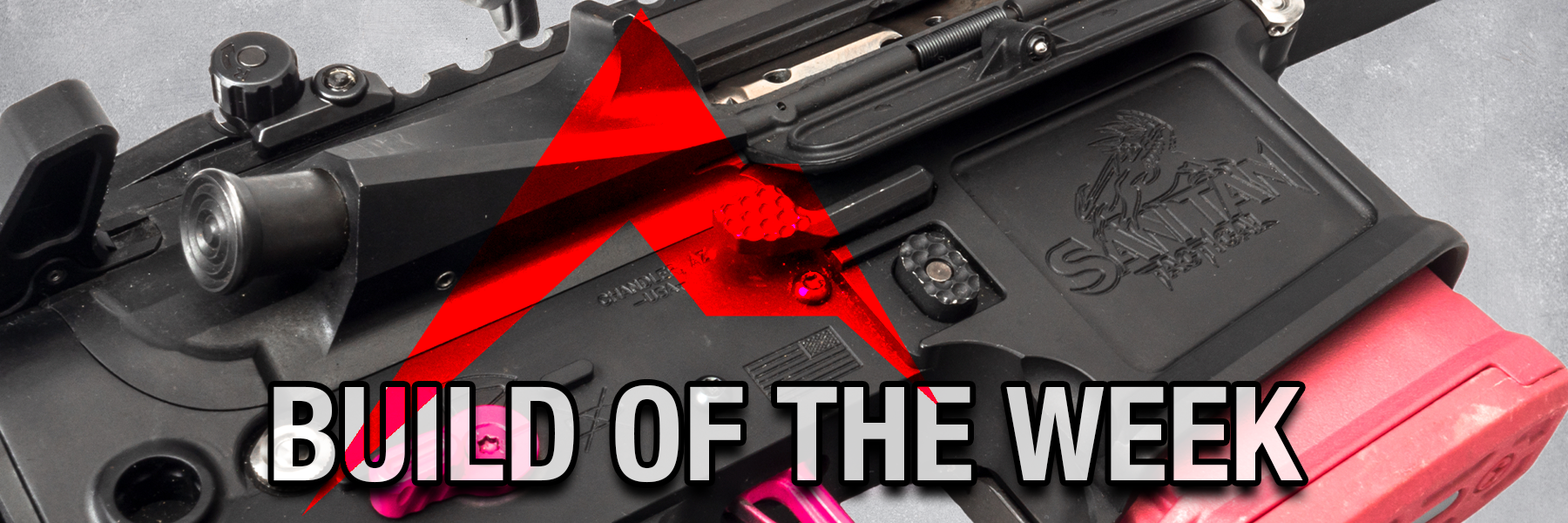Builds Of The Week


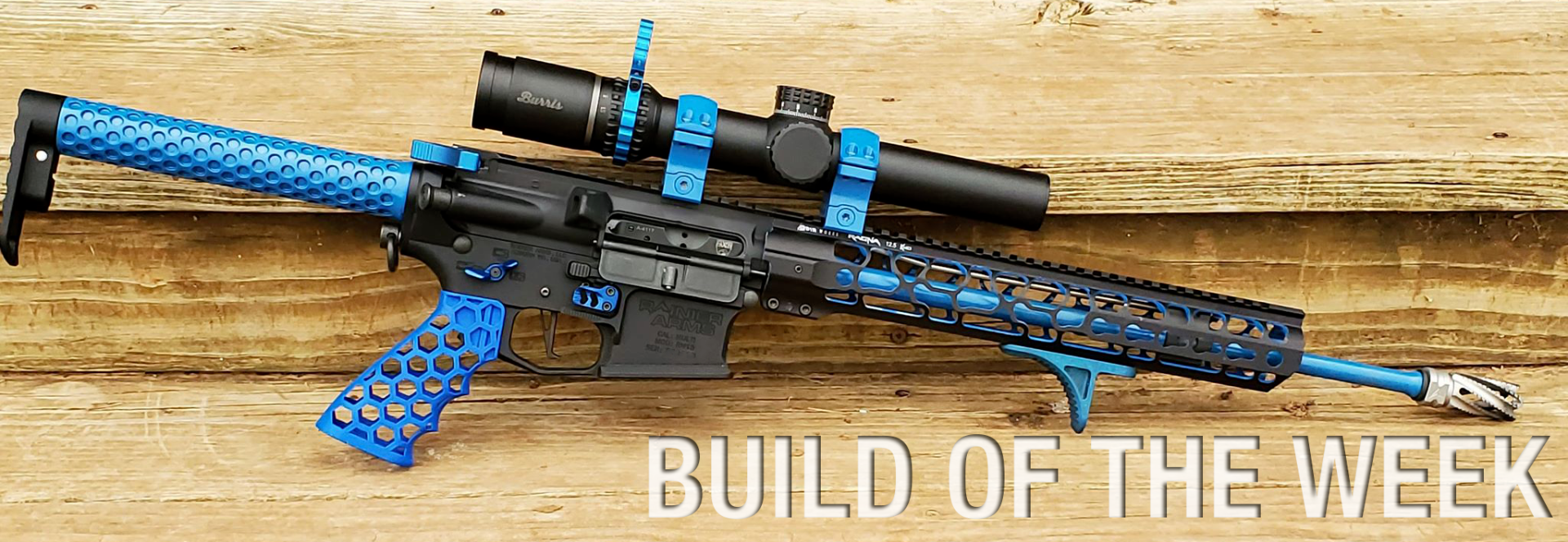
Our Build of the Week this week comes from Lisa Supon. This AR was designed and built specifically to shoot 3-Gun. Lisa needed a lightweight, quality rifle, and when she began shopping she found that everything prebuilt on the market that fit the bill was prohibitively expensive - so she decided to build her own rifle to her own liking. Between the weight, the quality, and the blue accents Lisa’s build is a 3-Gun worthy rifle with a lot of good pieces worth talking about.
Getting into 3-Gun
If you’ve never been involved in the shooting sports, be forewarned that they are addicting. Once you choose to get started in 3-Gun you’ll find yourself dreaming about your next gun build (whether or not it looks something like this one).
3-Gun is a popular shooting sport that utilizes pistols, rifles, and shotguns across a wide variety of run and gun courses. Step one for any competition is to find a match to shoot, sometimes just going to watch a match helps people who are very new to shooting sports understand the necessary equipment and how the safety rules work better than anything else (and if you’re not careful someone will lend you the equipment and help you get started then and there!). Even if your local gun range doesn’t hold matches themselves, most ranges will know where the nearest 3-Gun matches are held - if you don’t have a go-to gun range yet, you can use the NSSF’s wheretoshoot.org tool to find a range near you.
The guns required for 3-Gun are pretty basic: you need a pistol, a rifle, and a shotgun. Different divisions within 3-Gun competition are available depending on the equipment you have access to, although many people who get invested in the sport choose to build their equipment to their division of preference.
Building a light rifle, like this one, makes sense for shooting 3-Gun. Lighter rifles are less likely to cause fatigue when you are spending all day on the range literally running around with your gun. Lisa’s desire for quality is all sensible in the context of 3-Gun since firearms used in the sport are run hard and tend to break a lot more frequently than regular range toys.
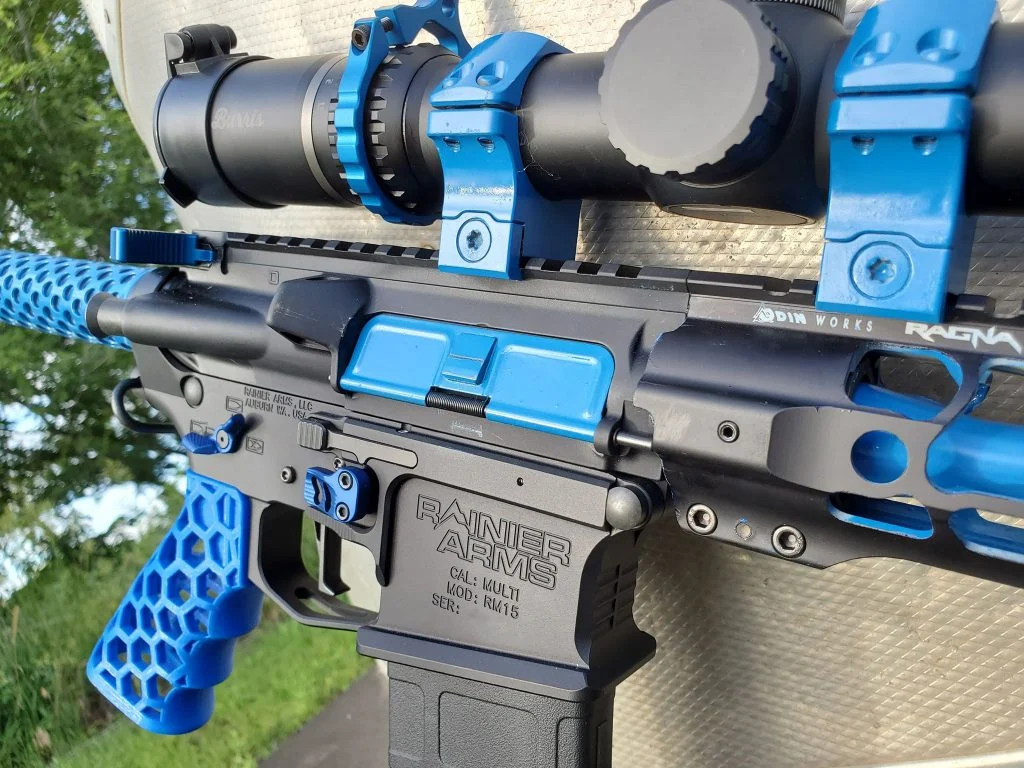
Rainier Arms UltraMatch Billet Lower
The Rainier Arms UltraMatch Billet Lower Lisa chose is CNC machined from solid billet 7075 aluminum, and finished with mil-spec hardcoat anodize to a surface hardness of 60 Rockwell. There are a lot of items that are compatible with this lower, and using it as a starting point for a straightforward, quality build is a very practical move.
The ambidextrous nature of the Rainier Arms UltraMatch Billet Lower is an important note for someone who is looking to get into 3-Gun. One thing about 3-Gun stages is that you never know what you’re going to get, and that includes having to shoot from awkward angles or even off-hand. Having ambidextrous controls and occasionally practicing with them allows you to manipulate your firearm no matter what weird position the course designer places you in.
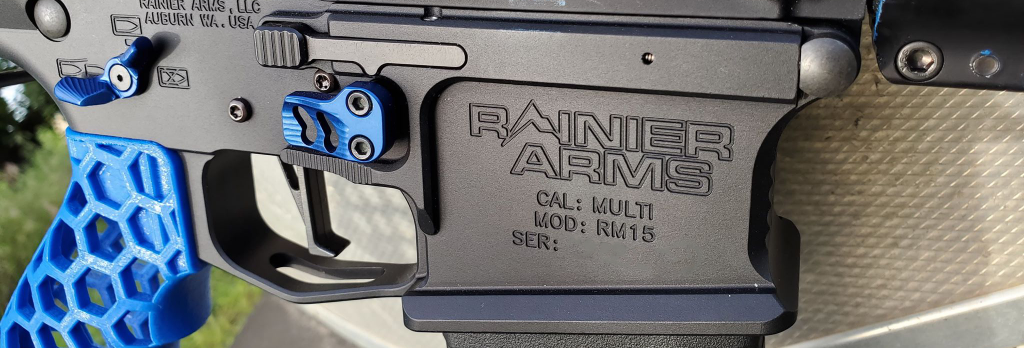
CMC AR-15 Drop-In Trigger
CMC has a wide variety of triggers available for rifle enthusiasts. Their standard AR drop-in trigger is available in both curved and straight variations and comes factory pre-set to two pounds, an excellent weight for a 3-Gun competition AR.
CMC triggers boast an ultra-crisp break with a positive reset, these attributes help 3-Gun shooters make their shots quickly and accurately, without any question about what’s going to happen when the trigger is pulled. They are also quick and easy to install, which is valuable if you’re doing your own build and are in the process of learning how to piece together a rifle.
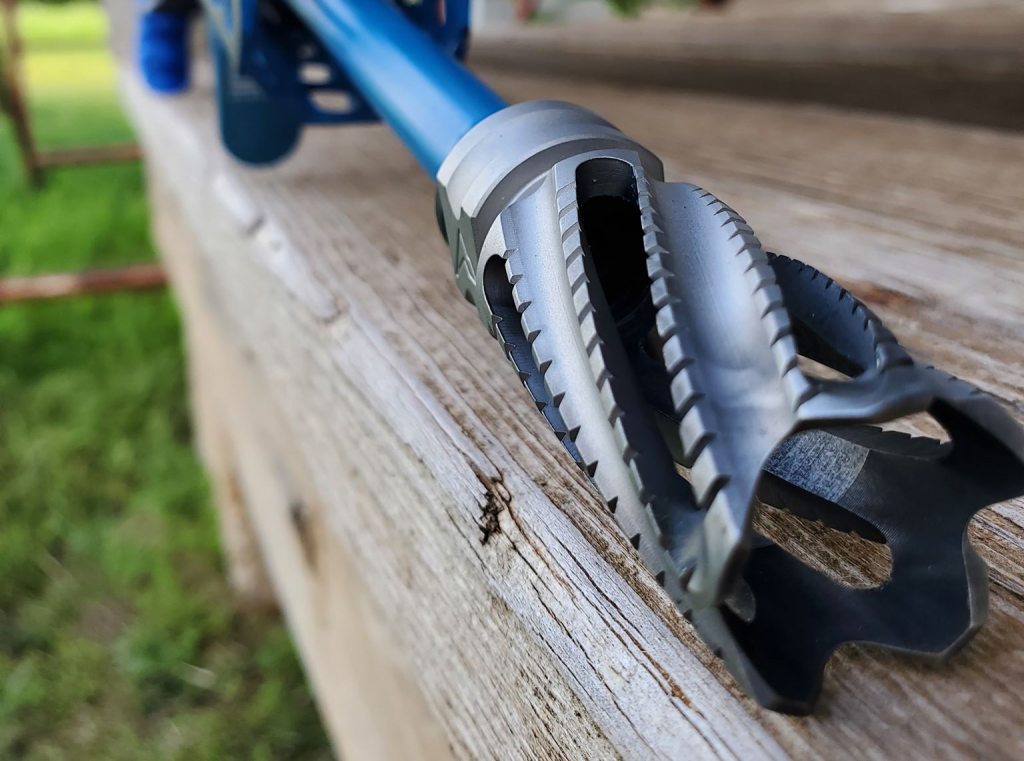
Rainier Arms FHV2
Putting the proper flash hider on a gun can be a difficult decision for a 3-Gun shooter. Limiting muzzle rise and being able to transition from one target to the next quickly is an important part of succeeding in competition for skilled shooters. For the rest of us - it can be as simple as limiting noise and flash so there’s less distraction while you’re shooting, it can come down to aesthetics, or it can even come down to suppressor compatibility so you can have multi-functional firearms.
The FHV2 that Lisa opted to put on her gun is Rainier Arms’ latest edition to the Flash Hider market. It’s a highly functional and aesthetically pleasing flash hider available in 1/2x28 or 1/2x36 thread pitches. It comes in both a Satin and Black Nitride finish, so you can pick whichever one matches the look of your gun.
Whether you’re building for 3-Gun or time on the range, having a quality and lightweight gun can make your day more enjoyable, and piecing the build together yourself can ensure that you’re getting the proper parts every step of the process. Have a Build of the Week to share? Let us know by emailing [email protected]!


Yes, You Can Have a Short-Barreled Rifle (SBR)
Most people don’t realize that it’s legal to own an SBR in most states. While these items are NFA controlled, and a little more time-taking to buy, owning one is not as difficult as you might think. For our build of the week this week, we’ve featured a short barreled rifle from Instagram user @LeadslingersNW that is made from solid, quality parts - showcasing reliability without breaking the bank - and features a splash of pink Cerakote, lending a bright twist to a quality SBR build.
Legally Purchasing an SBR
In states where it’s legal, purchasing an SBR is easier than a lot of people realize. It’s important to research where you live because laws vary state to state and in some places even county to county.
In states where you can legally own an SBR, you have the option to build or buy an SBR with a different form necessary for each. If you’re choosing to buy an SBR you will have to fill out a Form 4 (Transfer) and go through the same waiting process you would if you were buying a suppressor. If you choose to build an SBR, which can be done even by putting a stock on an AR-pistol lower, you fill out a Form 1 (Manufacture) instead, shortening your wait time.
There are several different ways to file your Form 1 that can affect your wait time. For those who have an NFA trust, E-Filing your Form 1 is an option, and has a much faster turnaround time than sending in paper copies. At the time of this article, E-Filed Form 1s are being approved on an average of around 32 days, a significant difference from the turnaround time on the 196-day average turn around on paper copies filed the same way, or the 319-day average seen for Form 4s being filed using a trust.
For those who are interested in learning more, we have a post dedicated to information on the ATF Form 1 and manufacturing your own SBR.
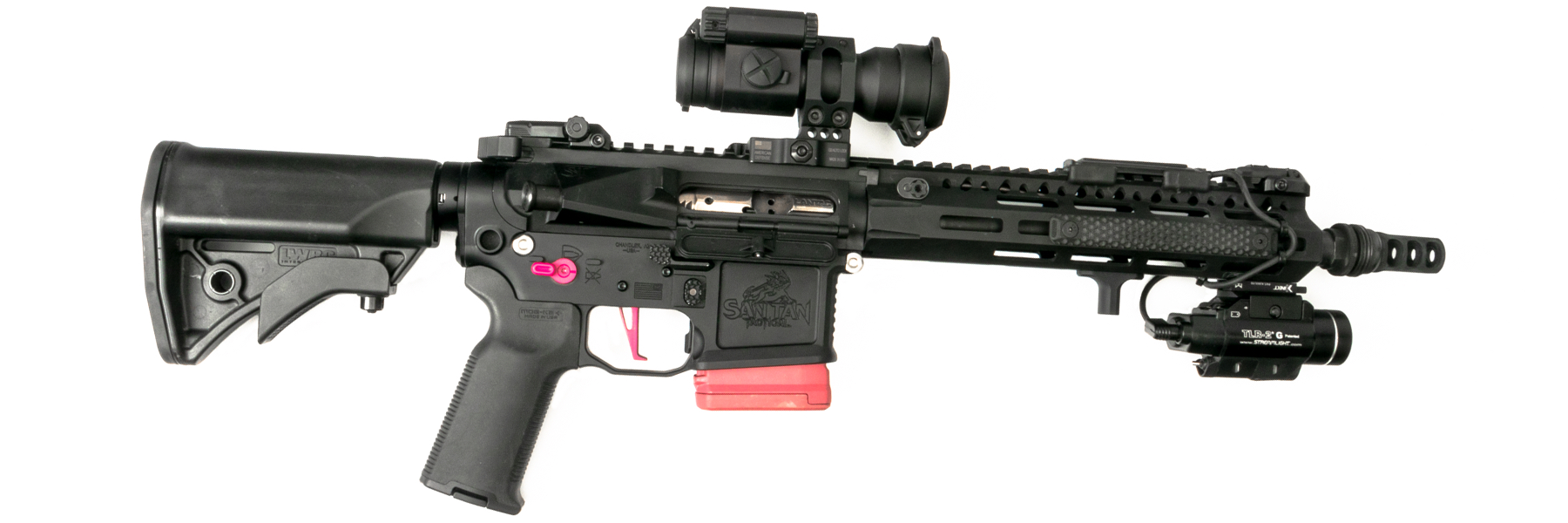
What Is Cerakote?
The pink pieces on this build were primarily created using a product called Cerakote. Cerakote is a ceramic-based finish that can be applied to all sorts of materials like metals, plastics, polymers, and wood. The unique formulation enhances many physical performance properties including abrasion resistance, corrosion resistance, chemical resistance, impact strength, and hardness. As far as design goes, there are a lot of different colors and styles of cerakote available so the possibilities are endless. Some people choose to add splashes of color to the rifle - like the pink we see here - while others will Cerakote complicated designs across their whole gun.
Building a High-Quality SBR
One of the most important parts of any rifle build is the basics - in this case, we can see where @LeadslingersNW started with the San Tan Tactical STT-15 receiver set and a Rainier Arms Select barrel.
The San Tan Tactical STT-15 receiver set is machined directly from a billet of 7075-T651 aerospace-grade aluminum and held to incredibly tight tolerances. It’s fully ambidextrous and finished in Mil-Spec, MIL-A-8625 Type III hard anodizing. These receivers are thoughtfully designed with an integral magazine well flare and ultra-grip texture on all the controls.
The Rainier Arms Select Barrel used on this build is made from a high-precision match blank to Rainier Arms specifications. They are chambered and crowned by hand and feature a 5-groove polygonal rifling that allows for greater accuracy and less erosion over time. The barrels are dimpled, which is a simple thing, but ensures your gas block is properly aligned. They are made in stainless steel - which ensures the longevity of use - and available in both satin or black nitride finishes. What all of this boils down to is that this is a highly accurate barrel designed for hard use and made to last at a price point that makes it accessible to anyone for the purpose of any build.

Small Upgrades that Make a Big Difference
Some of the smallest parts on your AR are some of the most important when it comes to usability. Of these, the trigger is the most obvious upgrade. For the purpose of this build, @LeadslingersNW has installed a CMC AR-15 drop-in flat trigger. The shape of your trigger is purely a personal preference, but advocates of flat triggers appreciate having a uniform pull regardless of where their finger lands on the trigger and an increased surface area for the finger pad.
Another part that has a huge impact on a rifle’s usability is the charging handle. For this build, a Radian Weapons AR-15 Raptor Ambidextrous Charging Handle was used. This was a good match with the San Tan Tactical STT-15 receiver set which is designed so that it can be fully ambidextrous. The charging handle is an important part because of how frequently it is used, being able to smoothly and quickly charge your rifle from either side of the gun can make a huge difference in day-to-day use.
Also affecting the rifle’s regular use is the safety selector. This particular build features the Battle Arms Development BAD-ASS Professional Ambidextrous Safety Selector. You’ll notice that the pieces continue to be ambidextrous, as having a rifle that is operable from either side is an important consideration on almost any build - whether for defense or competition there is a chance that a rifle will need to be deployed with your off-hand. The BAD-ASS also allows for the user to set it as a long-throw or short-throw safety depending on the user’s preferences, so you can set your safety to rotate 60-degrees or 90-degrees without altering your lower receiver.
For those who have always wanted one, building an SBR is a fun and affordable project with endless possibilities.



There’s nothing like a good excuse to show off some night shooting and fireball photos - so on that note: here’s this week’s build of the week, coming to you from Miso Beno. This AR-10 is outfitted with a stack of high-quality parts and pieces and is thoughtfully designed from the inside out with stunning results.
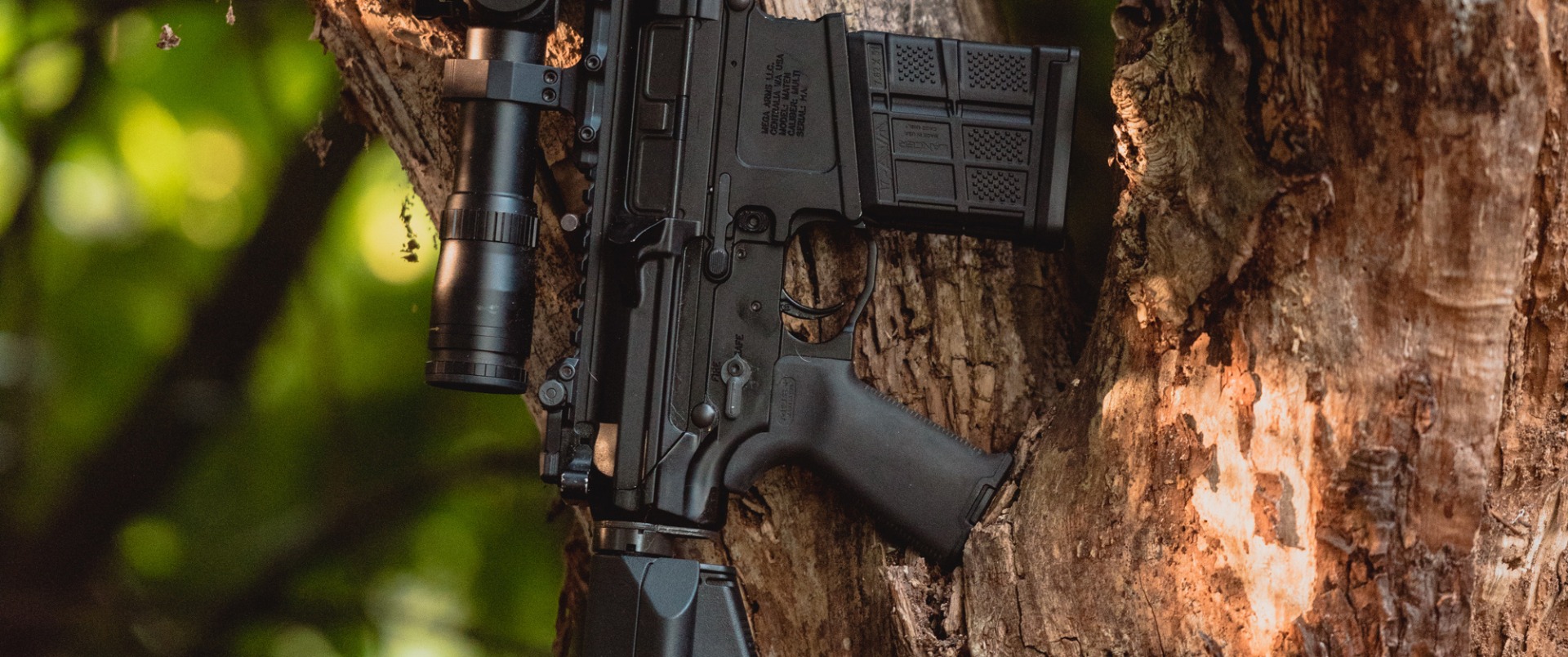
The Mega Arms Maten Billet receivers that make up the base of this firearm are machined from 7075-T651 aluminum and anodized with a true black Type II Class 2 hard coat. Mega Arms makes well-fitting and long-lasting receivers that can take a beating and work with most any other high-quality AR-10 parts. All necessary proprietary components are included when the receivers are shipped. These Mega Arms Maten receivers aren’t the easiest to acquire - they are released infrequently in smaller runs - so the easiest way to get your hands on one is to use our “Notify me when this product is in stock” option so that our system will email you as soon as we have stock available.
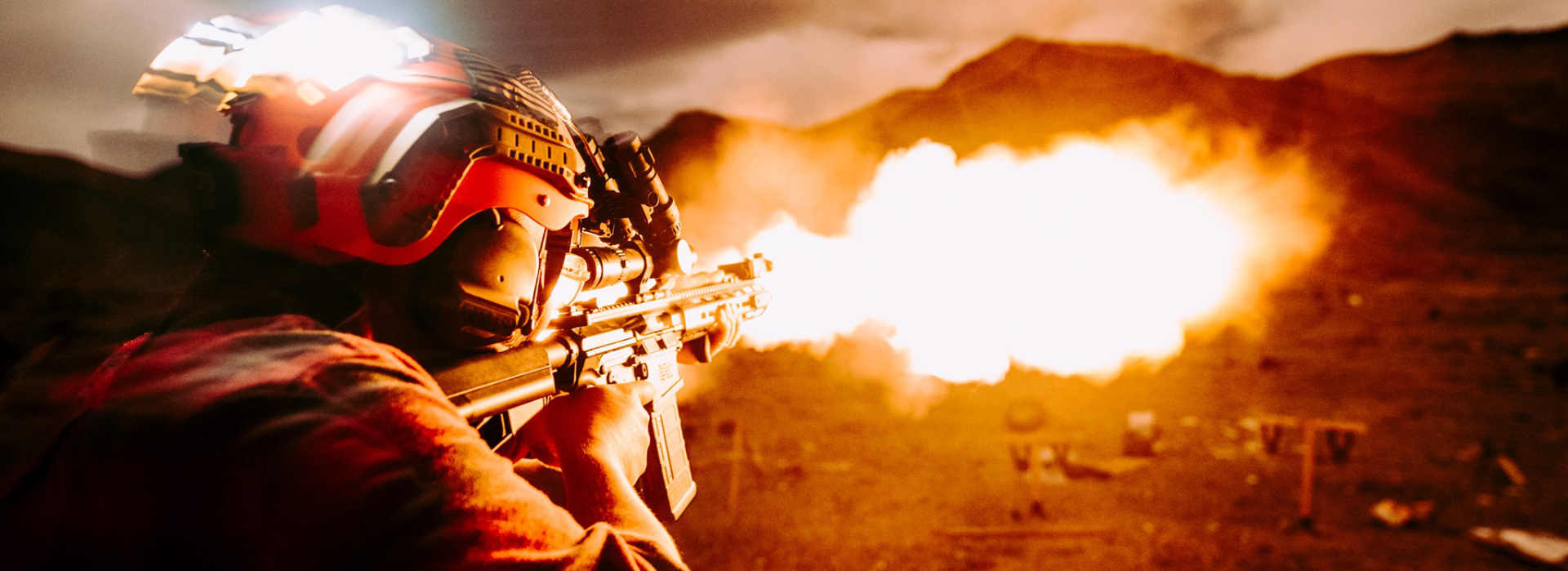
When it comes to capturing fireball photos you need to have the right muzzle brake. The purpose of the muzzle brake is to redirect gases to reduce muzzle rise, recoil, and side-to-side movement. There’s obviously a lot of science that goes into a well-designed muzzle brake, and the result of that science is frequently a lot of noise and a big fireball (along with reduced muzzle rise, recoil, and side-to-side movement). Nighttime shoots are a great opportunity to see your muzzle brake in action - just like Miso Beno’s Surefire SOCOM brake. The Surefire SOCOM is designed for use with Surefire’s fast attach suppressors, and on top of recoil impulse and muzzle rise control, it features a neutral porting to ensure bipod legs are loaded evenly.
If you’re going to attach a suppressor to a gun - which seems like a reasonable thing to do when you have a Surefire SOCOM muzzle brake - the JP Silent Captured Spring is a must-have. The springs are designed to eliminate the friction of standard buffer components to provide outstanding smoothness and sound abatement. The Silent Captured Spring buffers correspond with H1, H2, and H3 buffers and use an aluminum guide rod to cut overall weight. This was a thoughtful addition to this AR-10 build that will improve shooting of the rifle overall, with an added benefit of quieter function when a suppressor is attached.

The trigger is an unarguably essential part of the shooting experience. The Geissele Super Semi-Automatic Enhanced Combat Trigger (SSA-E) is the semi-automatic version of the trigger presently used in the U.S. Special Operations Community. The SSA-E is designed to be robust and reliable with a smooth, light first stage take-up and a crisp second-stage break. It’s a hard-use yet precise non-adjustable drop-in trigger that provides accuracy and reliability alongside an easy installation process.
Sometimes the best answer is also the most simple, and so we see with a couple of elements on this AR-10 build. The Mapgul PMags and ACS stock share ubiquitous popularity for their affordability, reliability, and availability. They are dependable options that finish this build off roundly and support the other high-quality components. The ACS is a pretty straightforward stock with a battery compartment and friction lock, which minimizes wobble and improves accuracy, that can be attached to any mil-spec sized carbine receiver extension tube.
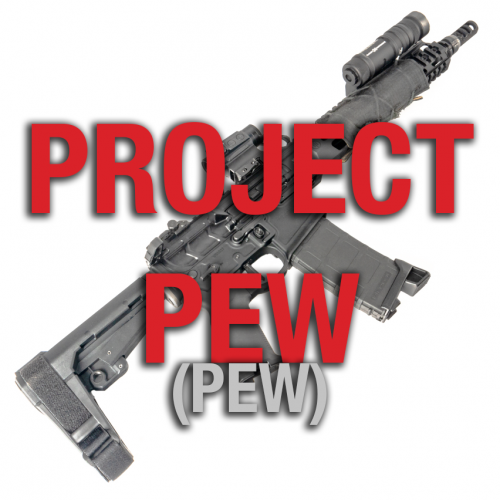


This week’s build of the week comes from one of our employees. It is an AR pistol with interchangeable uppers that allow it to be easily transition from a fireball-throwing .223 to a suppressed .300 BLK.
.223 vs. .300 BLK
The conversation surrounding .223 and .300 BLK has been going on since the Blackout cartridge was introduced. There are benefits to each, and each certainly has its place on an AR pistol build. .223 is one of the most readily available cartridges on the market, it also has a longer range capability as it is a smaller, faster round. This same range capability also means that it has lower energy than .300 BLK closer than 200 yards, and is designed to be suppressed.
The best way to choose between .223 and .300 BLK is, of course, not to. Your standard .223/5.56 AR lower and magazine are also compatible with .300 BLK, so all that’s necessary to swap between the two calibers is a different upper and some different ammunition. For this particular build, we have two complete uppers from Primary Weapon Systems: one in .223 Wylde and one in .300 BLK. Each has its own optic and flashlight, and features a KeyMo mount that works with the Dead Air Sandman-K - a 7.62mm suppressor that works for both .223 and .300 BLK.
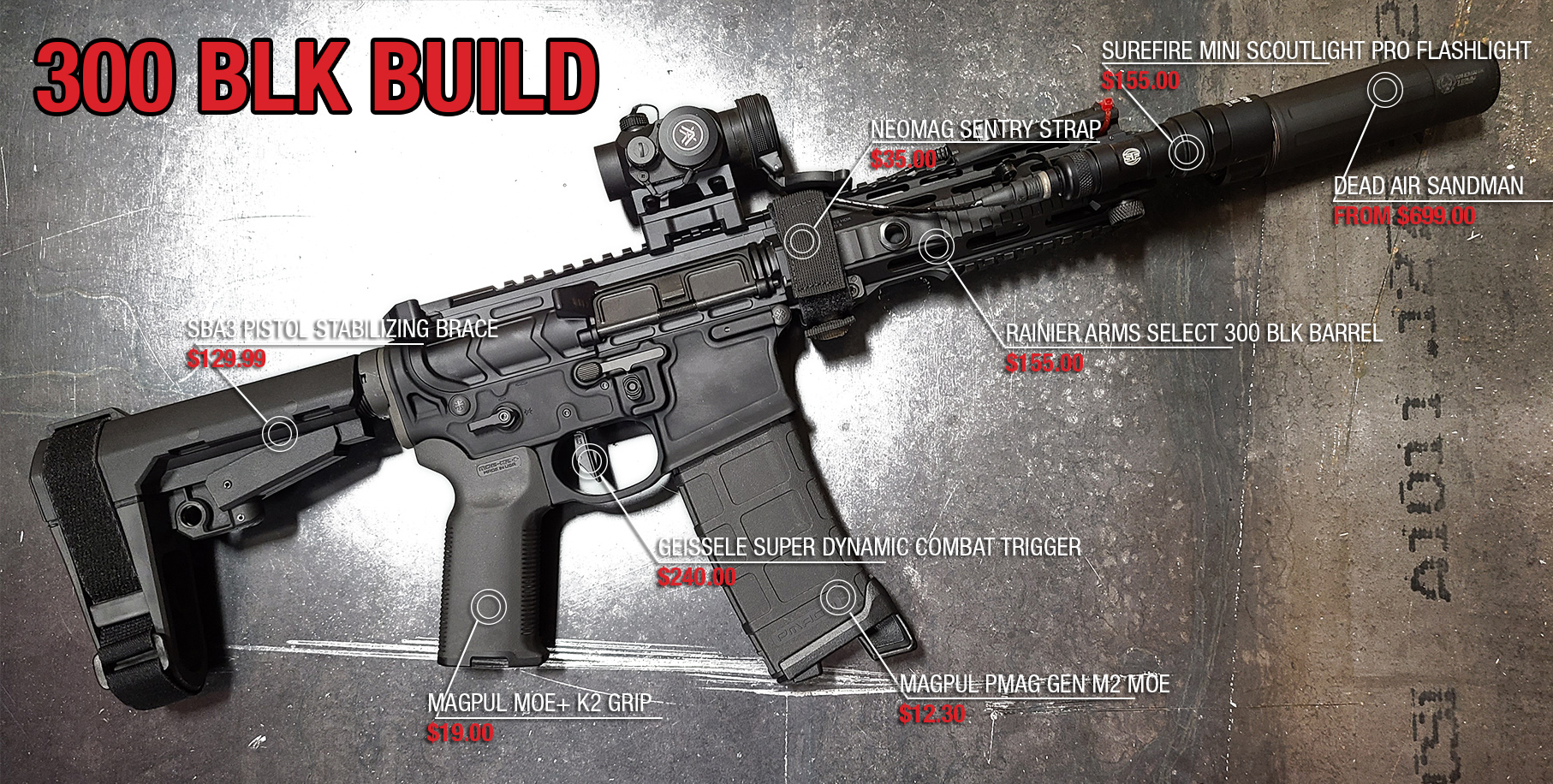
Buying a Complete Upper
Purchasing a complete upper is a great way to simplify the AR building process. Between the gas system, the barrel length, and the handguard there is a lot that needs to fit together right to have a functional and aesthetically pleasing upper receiver, so for newer AR owners purchasing a complete upper is an excellent way to do a partial AR build and get exactly what they want without over complicating the process. This can be especially beneficial if you’re planning to purchase two uppers to switch between .223 and .300 BLK. Purchasing similar upper receivers from the same manufacturer ensures consistency and reliability in your firearm. There are also a lot of ways to continue to personalize an upper even when it’s purchased complete. Between flashlights, red dots, and hand stops there are a lot of aftermarket options to continue to build on a complete upper receiver.
Rainier Arms Select Barrel
The Select Barrel is made from a high-precision match blank to Rainier Arms specifications. They are chambered and crowned by hand and feature a 5-groove polygonal rifling that allows for greater accuracy and less erosion over time. The barrels are dimpled, which is a simple thing, but ensures your gas block is properly aligned. They are made in stainless steel - which ensures the longevity of use - and available in both satin or black nitride finishes. What all of this boils down to is that this is a highly accurate barrel designed for hard use and made to last at a price point that makes it accessible to anyone for the purpose of any build.
Primary Weapon Systems Mk1 MOD 2 Complete Upper
Primary Weapon Systems is known for their high-quality AR-style builds. Their Mk1 MOD 2 is not only an example of this but probably one of their most iconic pieces. Not only is it a favorite among their employees, but has been used successfully for a wide variety of activities - including hog hunts and SWAT training courses.
The free-float handguard is fully forged and has both Picatinny and M-Lok mounting systems. They’ve eliminated the forward assist to save on weight and equipped the upper with a Radian Raptor Charging handle. There is a 3-setting adjustable gas system and the barrel has a 1:8 twist rate.
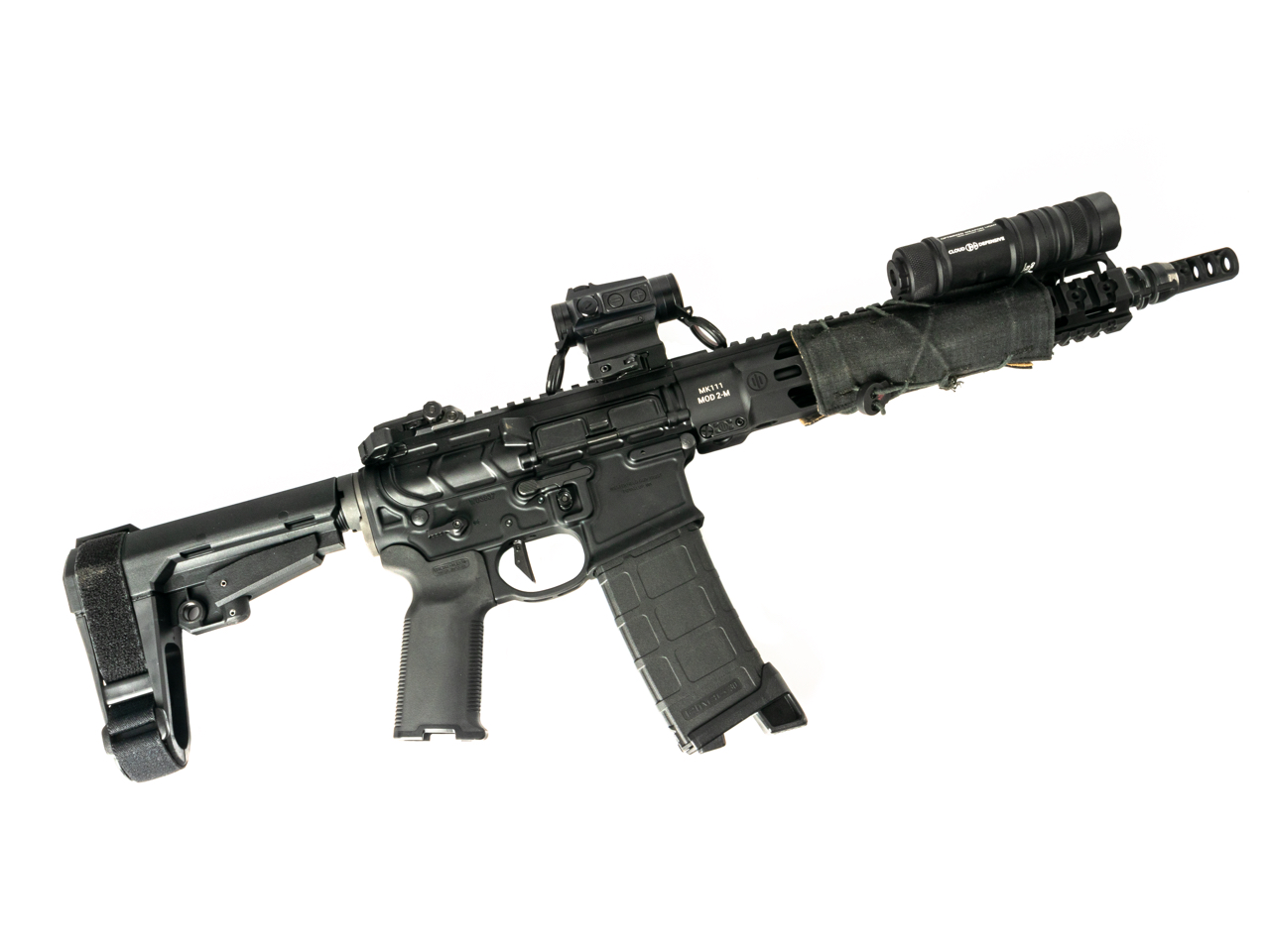
Lantac Dragon Muzzle Brake
The Lantac Dragon Muzzle Brake that is featured on this build uses their “Short Energy Pulse system” to reduce the length of recoil so that energy doesn’t lap over shot for shot to throw the shooter off target. The Lantac Dragon features a KEYMO mount, fully licensed from Dead Air, which works with the Sandman silencer line from Dead Air, shown here on the .300 BLK upper. The product is fully licensed from Dead Air and will not affect the warranty on a Dead Air suppressor.
Neomag Sentry Strap
The Neomag Sentry Strap is a nifty addition to this build that might go overlooked by those unfamiliar with the product. It’s a simple strap with a magnetic clasp that wraps around the handguard where it meets the receivers and is used to stage the sling. The idea is that a sling can be kept tucked against the gun when not in use, then a simple tug can deploy it when it is time to sling the gun.
It’s easy to see in Neomag’s video on the Sentry Strap:
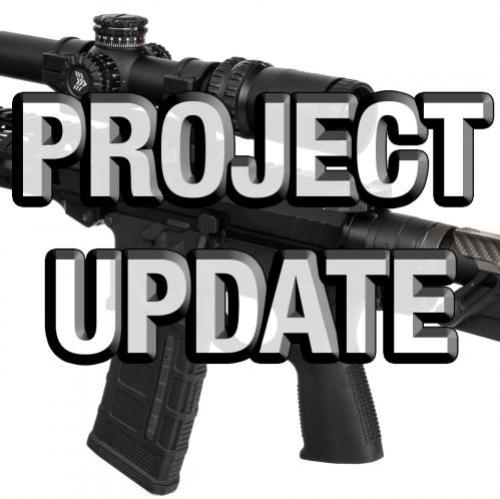

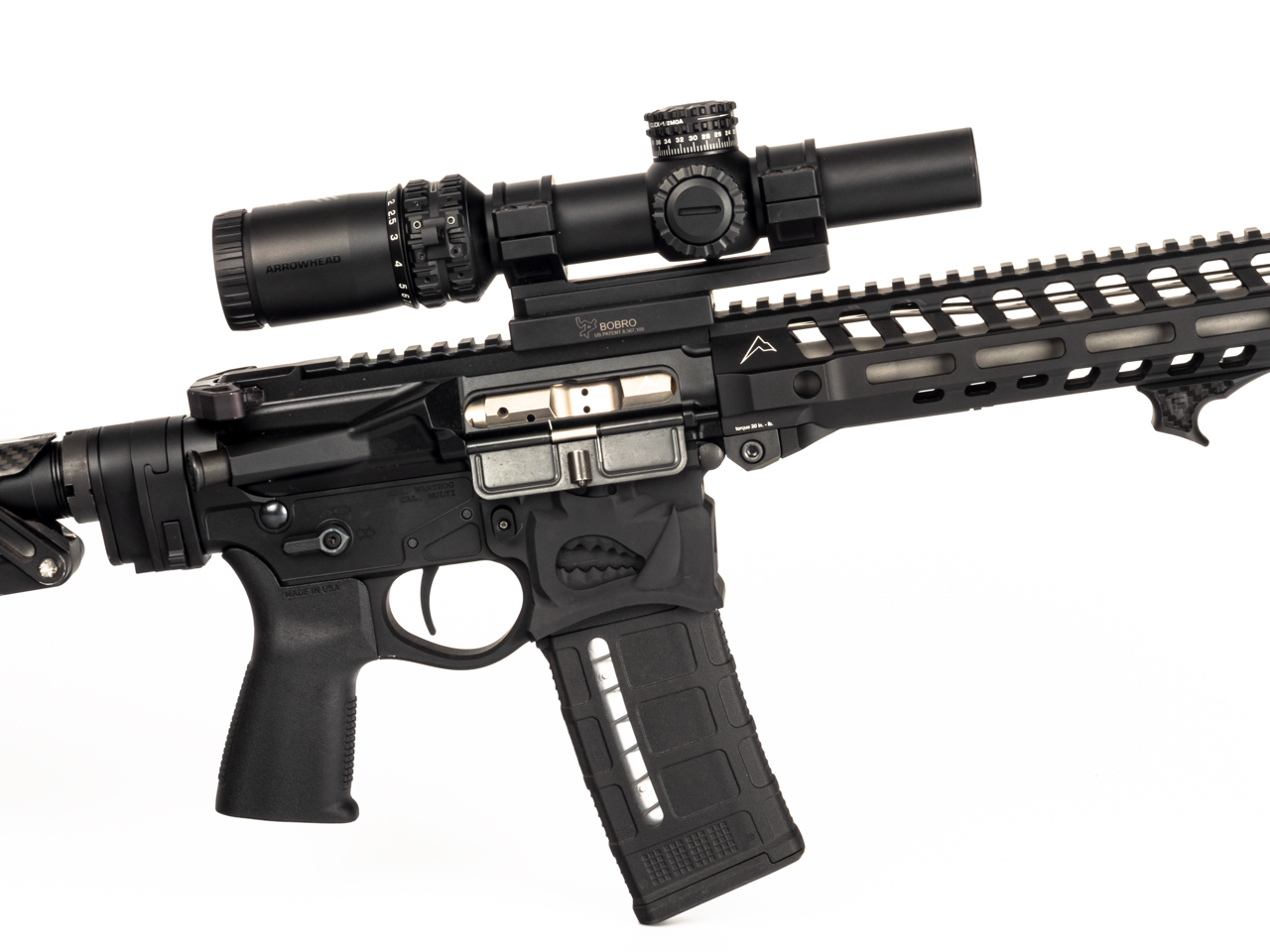

Our build of the week this week features some new products that have just hit our warehouse alongside some old favorites. Thanks to earlier builds, Rainier Arms fans will recognize the Hellbreaker lower from Sharps Bros paired with the Rainier Arms upper receiver and bolt group. We’ve updated this rifle with some fresh new additions, including a new stock adapter, bipod, and optic.
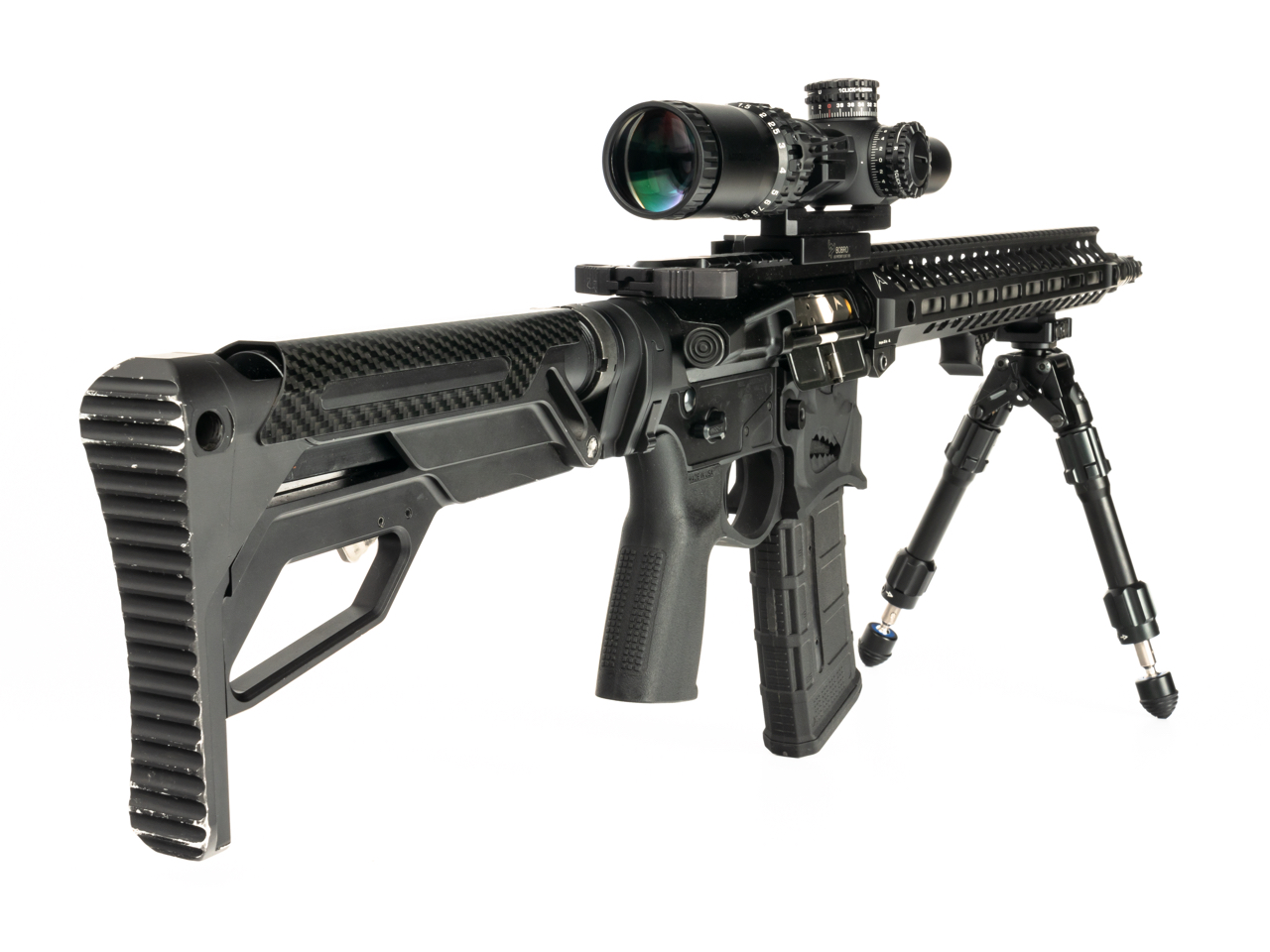
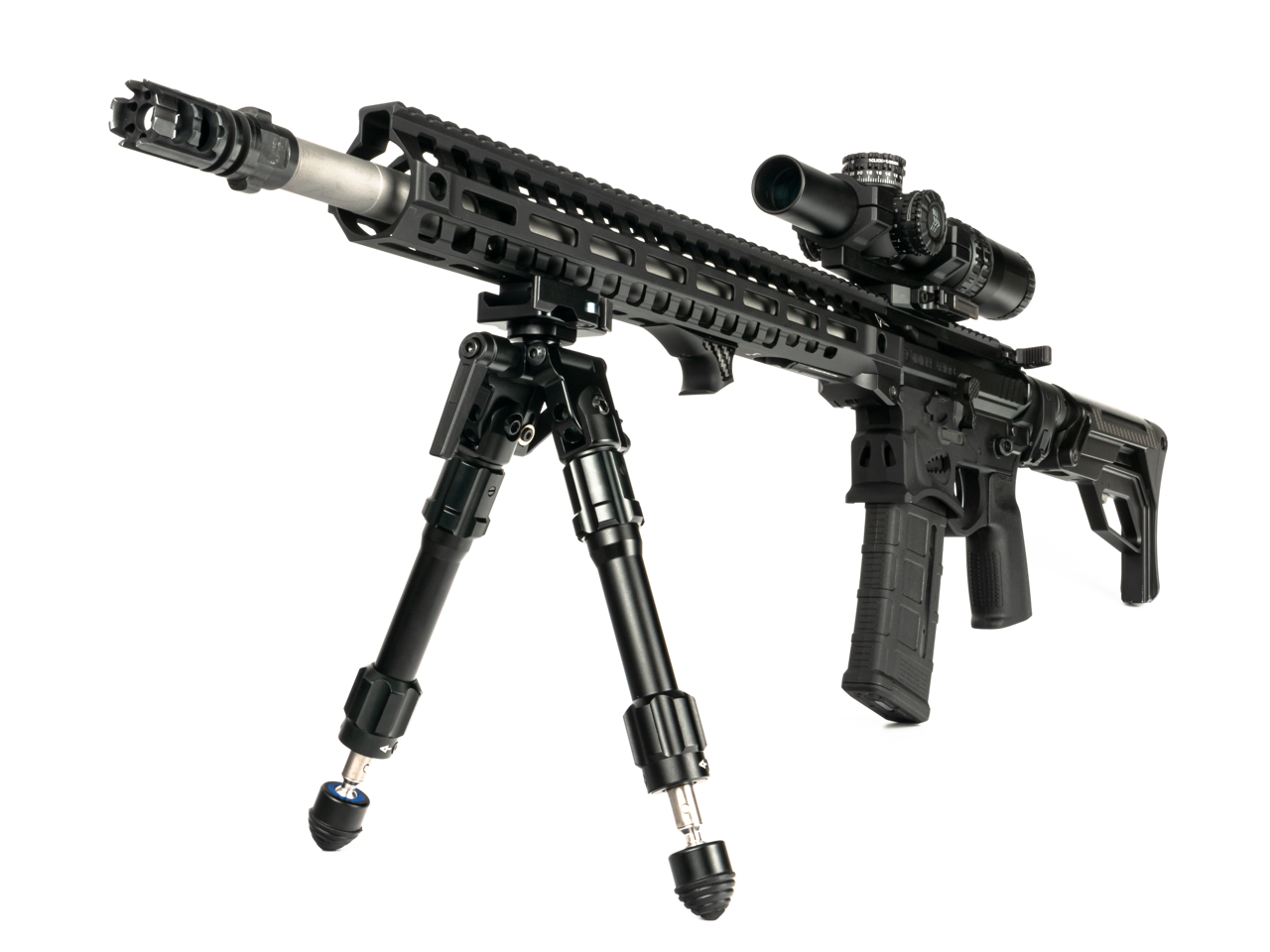

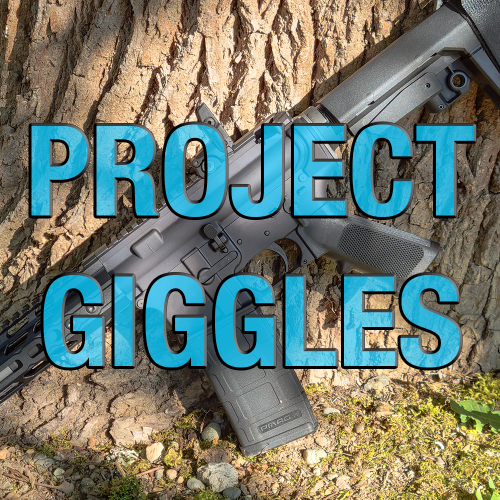


Guns are frequently purpose-built. They could be purpose-built for self-defense, for law enforcement or military, for long-range shooting, for competition, but the direction that having a purpose gives a gun is important to how a build is put together.

Our build of the week this week was very specifically purpose-built for one important job: giggles.

The story is pretty simple: My household needed a .300 blackout pistol. We needed a .300 blackout pistol because everybody needs a .300 blackout pistol, it’s called self-care. Fortunately, I live the type of life where there are extra AR lowers hanging out around my house and it was decided one would become a self-care gun. Once this was decided I started doing what any gun industry employee excels most at: shopping for gun parts. (And by shopping for gun parts I mean asking my more knowledgeable coworkers, “What should I buy?”)
To say I’m happy with the build we ended up with would be putting it mildly - this little pistol is going to be a good time on the range for shooters of all different levels and will be in my range bag no matter who I’m headed to the mountains with. One of the benefits of AR pistol builds is how accessible they are to different shooters: they’re easy to shoot and have low recoil so new shooters can handle them comfortably, and they’re small and light enough that shooters with a slighter frame have no issue handling them even over more extended periods. I was on a budget with this build - not a tight budget, but you can see where I splurged (and where I didn’t). So without further ado let’s dive into this AR pistol build and see what some of the industry’s most hardcore AR nerds helped me put together for a fabulously fun and relatively affordable .300 blackout:

Arms Republic AR-15 Lower Parts Kit
When I was shopping for a lower parts kit I had a few things on my mind. I knew I wanted something basic and reliable because I figured I would probably be upgrading it over time. Down the road I want to get a fancy trigger, an extended safety, and maybe add some splashes of color to the gun, but for now? For now, I needed a lower parts kit that was affordable, available, and I could trust to get the job done.
There are quite a few of these lower parts kits available on the market. For parts like these, the most important thing is to make sure you're sourcing your parts kit from a manufacturer you trust. While lower parts can be upgraded over time, they can also play a huge factor in how your gun functions, so ensuring you're getting quality parts at whatever price you're looking at is still key.
SB Tactical SBA3 5 Position Pistol Stabilizing Brace
The SB Tactical SBA3 Brace was developed in 2012 by USMC and Army veteran Alex Bosco. The design was based on experience Bosco had while shooting a disabled combat veteran in an effort to help both Bosco’s friend and other wounded combat veterans safely fire an AR pistol. In November of 2012, the ATF sent an approval letter for the brace, resulting in the formation of SB Tactical by Bosco and Grant Shaw and they began making production prototypes for AR and AK platforms. By 2013 they had sales agreements with SIG SAUER and Century Arms International, and in May 2013 the first Pistol Stabilizing Braces were delivered into the marketplace.
The SB Tactical SBA3 Brace is one of the most popular additions to AR pistols on the market. The brace attaches to any mil-spec carbine receiver extension and is 5-position adjustable. It is an invaluable addition to any AR pistol to increase versatility and stability without adding a lot of weight.
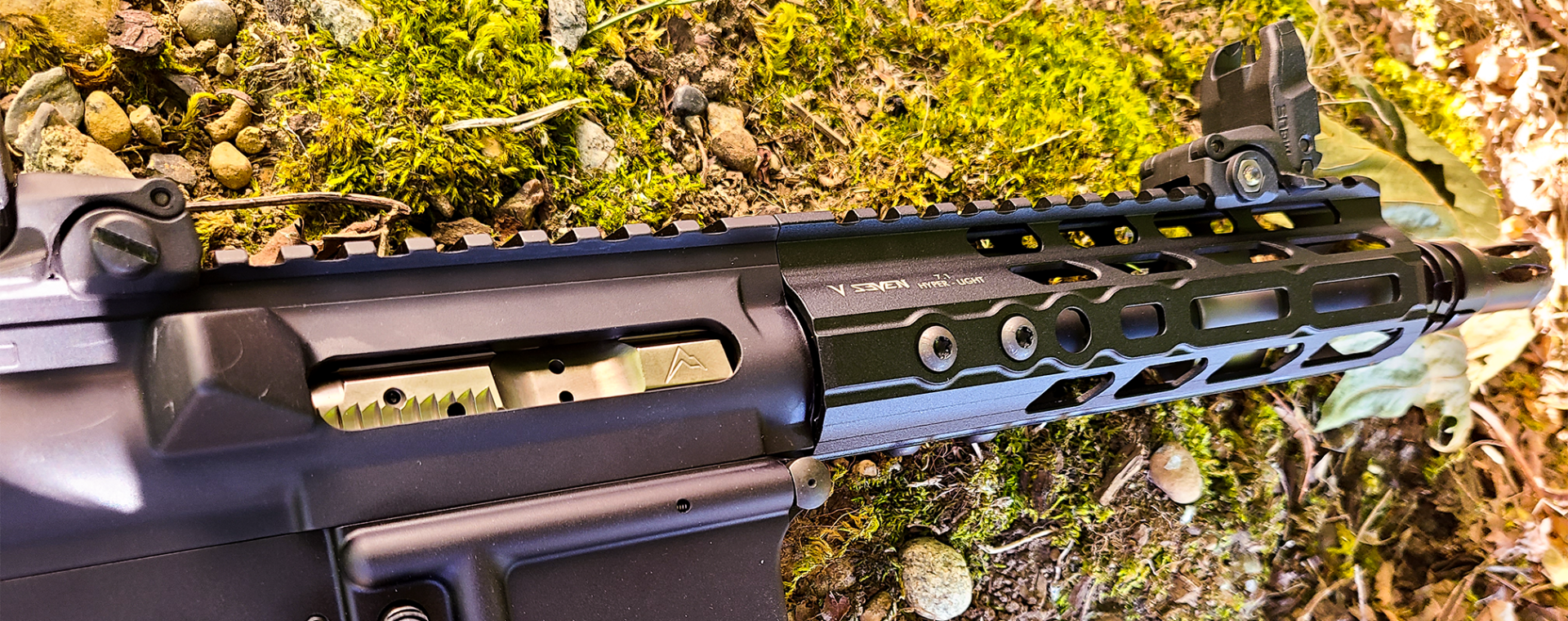
V Seven Weapon System Hyper-Light Magnesium AR-15 M-LOK Handguard
Weight was a consideration when designing this AR pistol. For smaller framed shooters too much weight on the front of the gun can lead to a less than pleasant shooting experience. As a smaller-framed shooter myself, I knew I had to either save weight on the rail or the barrel if I wanted this gun to turn out how I wanted.
I opted to go for a lighter handguard, partially because I think the bigger, cheaper handguards give ARs, especially little pistols, a really clunky look. This way I could keep weight down without having to worry about searching for a fluted barrel, which kept me right where I wanted to be: shopping for a Rainier Arms Select barrel. (More on that later.)
Rainier Arms Precision Match Grade AR-15 BCG
One place where I tend not to skimp when it comes to my AR builds is the bolt carrier group. This is such a key component to how the gun runs that I just don’t believe it’s the time to try and save a couple of dollars.
The Rainier Arms Precision Match BCG is heat-treated and nickel boron plated, it’s MPI/HP tested, marked, and comes with a limited lifetime warranty. In a nutshell: nothing’s going to go wrong with this BCG, but if something does go wrong - and as long as I don’t do anything stupid - there’s a warranty to cover it.
This is a high-quality bolt carrier group that will keep this little pistol running and running well. The last thing I want to have to worry about is trying to figure out why my gun isn’t cycling when I’m on the range, or give a firearm that isn’t shooting well to someone who’s new to shooting. Not only can handing a gun that doesn’t function well to a newbie mar their experience, but it can also be dangerous as they try to navigate requesting help with a loaded firearm in hand.
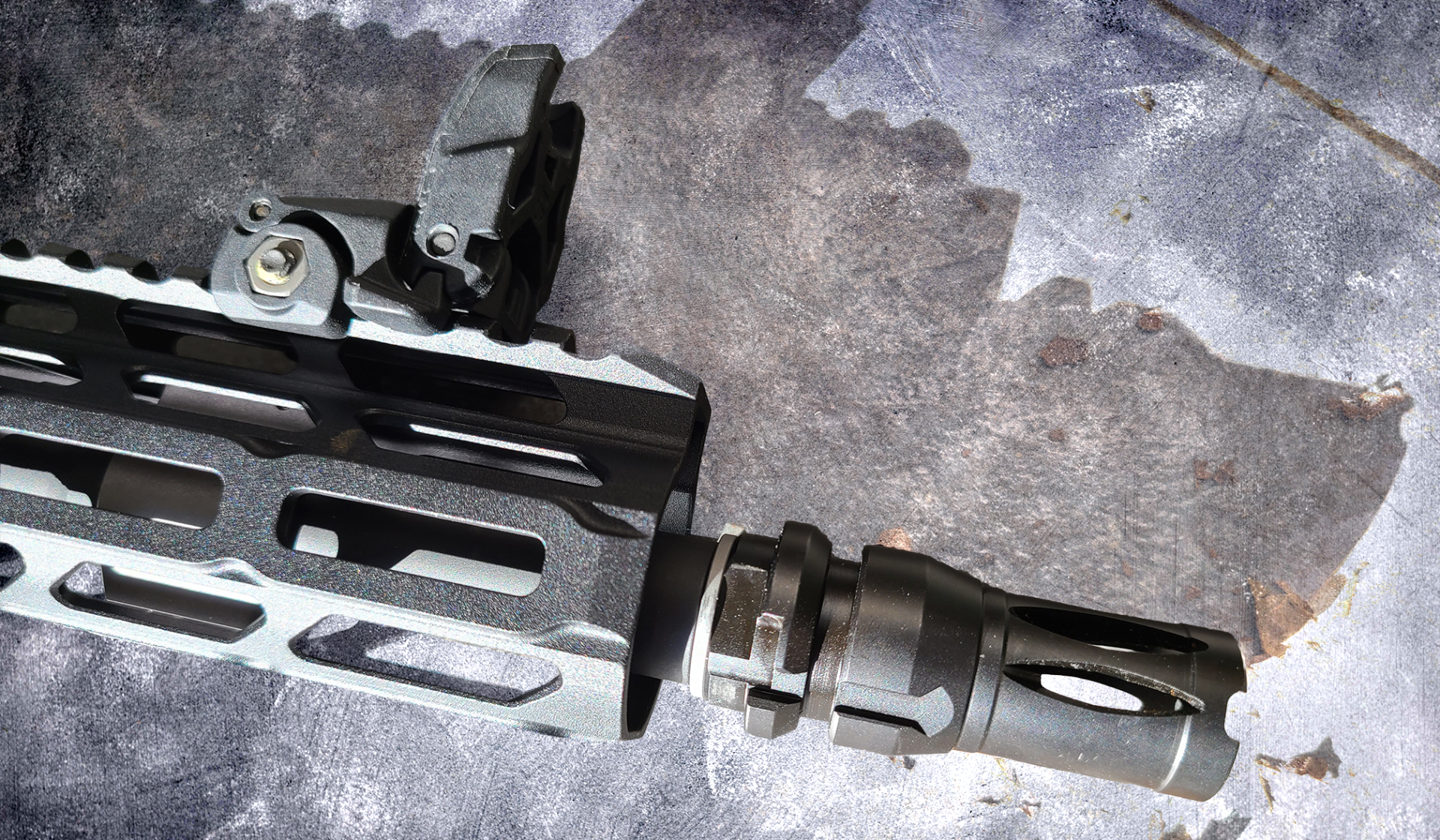
Forward Controls Design 6310KM Keymo Mount
What’s the point of buying a .300 blackout if I’m not going to suppress it? I’m sure there might be one, but suppressors are an important part of self-care. Even though I don’t have one yet, I know that someday this little pistol will be quietly pewing subsonic ammunition, and I built it with that purpose in mind.
The Forward Control Design Flash Suppressor features a Keymo mount, which means I’m set up for whenever I pick up that Dead Air Suppressor. Forward Control Designs is dedicated to creating form-fitting and user-centric AR parts, they believe in elegant simplicity and that was all I needed on the front of this gun. Plus the alignment notches double as wire cutters - what more could you possibly want?
Rainier Arms Select 300BLK Barrel - 8" Nitride
The barrel is another really important part of any build. I wanted the best barrel I could get without spending a fortune, and when it comes to value and quality it’s pretty much impossible to beat the Rainier Arms Select line.
I feel like I end up talking about the Select barrels in a lot of the Build of the Week write-ups, which speaks quite accurately to how we feel about them here at Rainier Arms. They are highly accurate barrels designed for hard-use and available at an incredibly accessible price point. Yes, I could’ve opted for a fluted match barrel, but as it is this gun weighs in at just over four pounds (4.142, if you must know) as it is, and the extra weight savings didn’t justify the price jump in a short-barreled pistol that was never going to need the match-grade precision.
Putting this build together was a lot of fun. I felt like I learned a lot and I know it’s going to create a lot of good memories on the range. I think sometimes it’s important for us to step back and remember why we’re excited about shooting, and remember how much fun it can be just to go to the range with friends. There’s no shame in having guns designed around this premise, and I’m happy to have added this .300 blackout pistol to the safe.
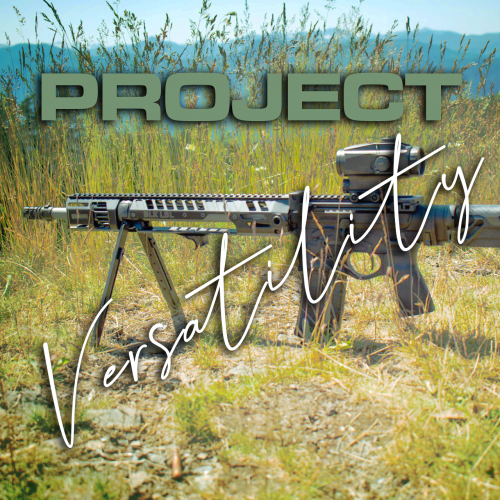


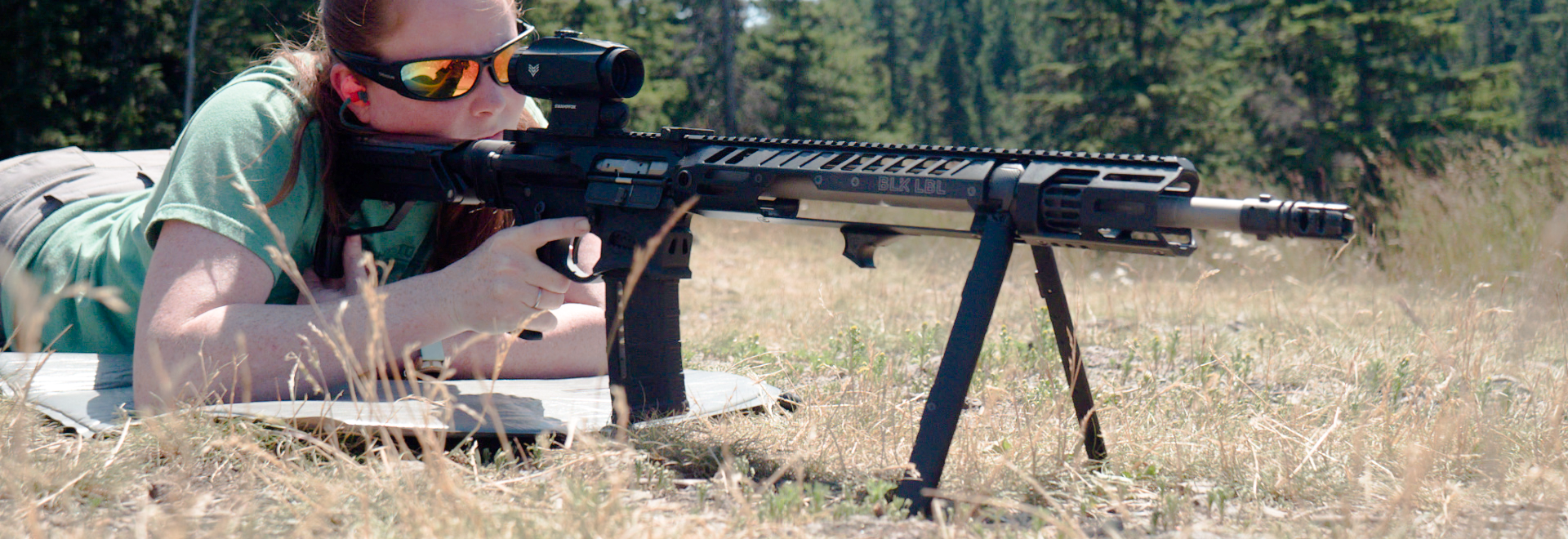
Something Known: BLK LBL Bipod

Something Known: Devil Dog Concepts Hard Charger
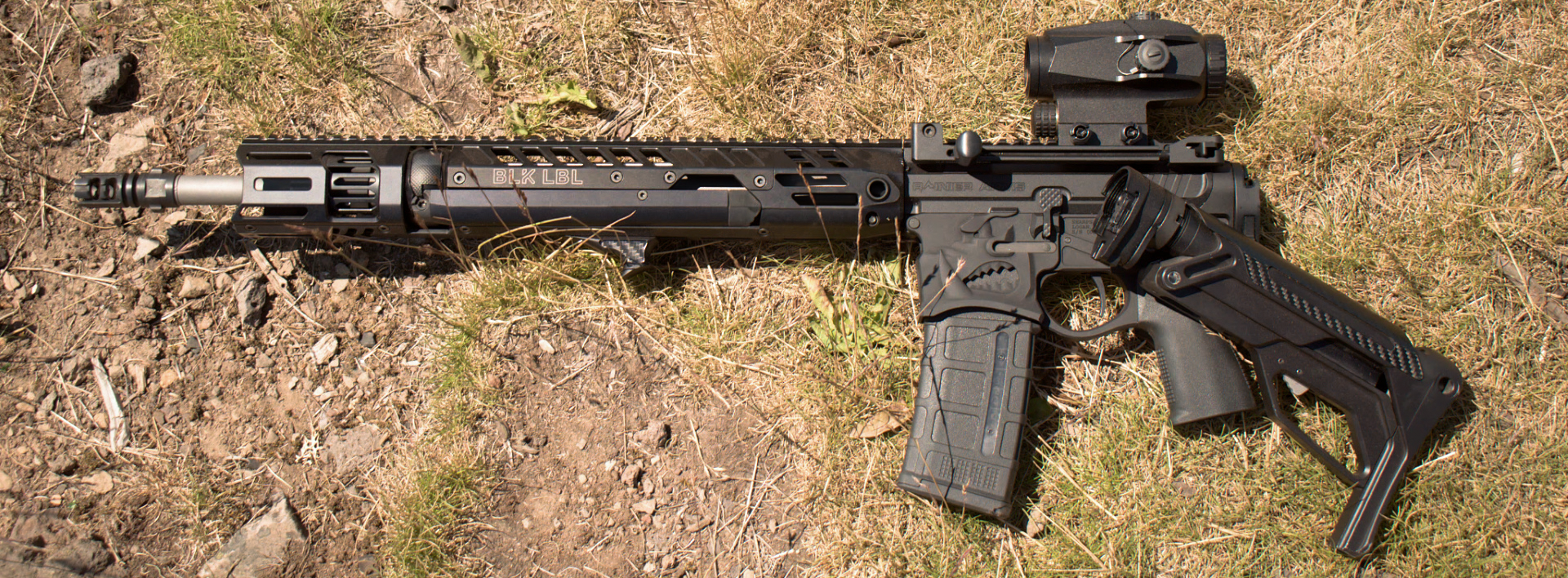
Something New: Rellim Arms Stock Adapter Kit
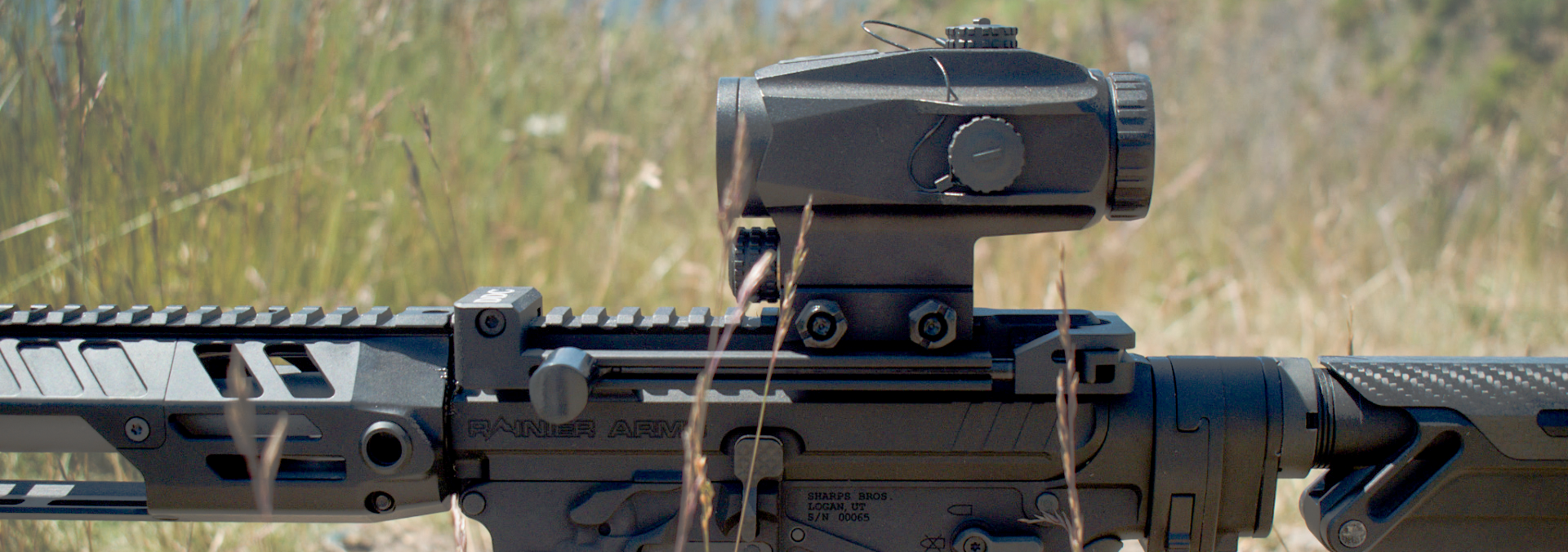
Something New: Swampfox Trihawk 3X30 MOA Prism Scope

